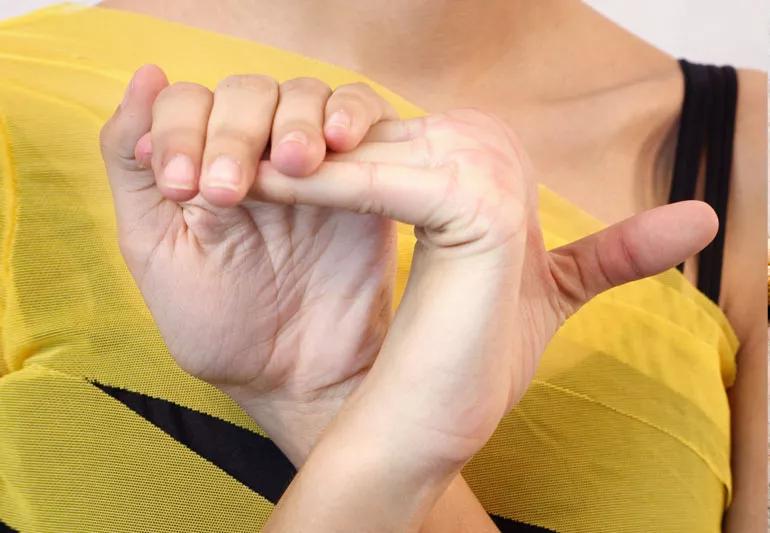Advertisement
Plus, when to see a doctor about it

Growing up, were you that kid at the party who could twist your body into a pretzel or bend your fingers all the way backward?
Advertisement
Cleveland Clinic is a non-profit academic medical center. Advertising on our site helps support our mission. We do not endorse non-Cleveland Clinic products or services. Policy
Hyperextending a limb may feel normal to you — and most of the time, if you’re so-called “double-jointed,” it’s not harmful to your body. But rarely, it can be a red flag for other health conditions.
In reality, there’s no such thing as being double-jointed. (Wait, what?) The term implies that you have two joints where there should be one, which isn’t possible, says orthopaedic surgeon Michael Star, MD.
What people think of as double-jointedness is actually hypermobility, or joints that can move beyond the typical range.
Your joints are made up of connective tissue and a protein called collagen. If connective tissue is a building, collagen is the bricks. Hypermobility results from the variation in how those bricks come together.
And you don’t have to be a contortionist to be considered hypermobile. “Everybody has a different level of flexibility. For example, dancers and gymnasts can bend over backward — and then there’s me, who can’t even touch the floor,” Dr. Star relates.
“It’s all on the mobility spectrum. Hypermobility is just at one end of it. Dancers and gymnasts don’t have a disease. They’re simply more flexible.”
About 20% of people are hypermobile. Some of them are also at increased risk for shoulder and knee dislocations. But unless hypermobility coincides with significant pain or recurring injuries, there’s usually nothing to worry about.
Advertisement
“Doctors will likely recommend physical therapy, activity modification and strengthening exercises,” Dr. Star says. “These activities give much-needed stability to the joint.”
Ehlers-Danlos syndrome is a group of rare genetic disorders. Because EDS affects connective tissue, it is closely linked with hypermobility.
The most common type of EDS is hypermobile Ehlers-Danlos syndrome. Its most common symptom is — you guessed it — extremely flexible joints. Another sign is skin that is stretchy and doesn’t heal well.
While there is no cure for hypermobile Ehlers-Danlos syndrome, there are ways to effectively manage it. If you suspect you or your child has EDS, a doctor can recommend lifestyle changes and treatments that can help.
Advertisement
Learn more about our editorial process.
Advertisement

Vitamin D is an umbrella term for both D2 and D3 — both help keep your bones and immune system strong

Exercising and stretching your lower back, hamstrings, hips and quads can greatly improve your physical well-being

These creams that you apply to your skin can actually help reduce localized pain, swelling and inflammation

This satisfying, involuntary act of yawning and stretching helps release tight muscles

If soaking your feet, disinfecting your shoes and making lifestyle changes don’t do the job, it’s time to talk to a doctor

Genetics, hormones, medications and stress are just a few reasons your feet could be extra funky

While an ultrasound shows your muscles and tendons, an MRI also shows your joint cartilage, bones and heart chambers

Sitting for long hours, like at your desk job, can make your butt sag — among other effects

If you’re feeling short of breath, sleep can be tough — propping yourself up or sleeping on your side may help

If you fear the unknown or find yourself needing reassurance often, you may identify with this attachment style

If you’re looking to boost your gut health, it’s better to get fiber from whole foods